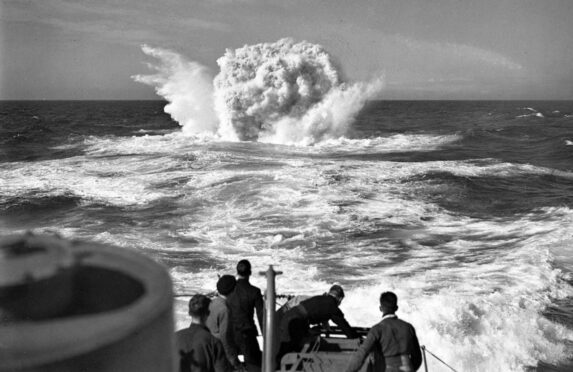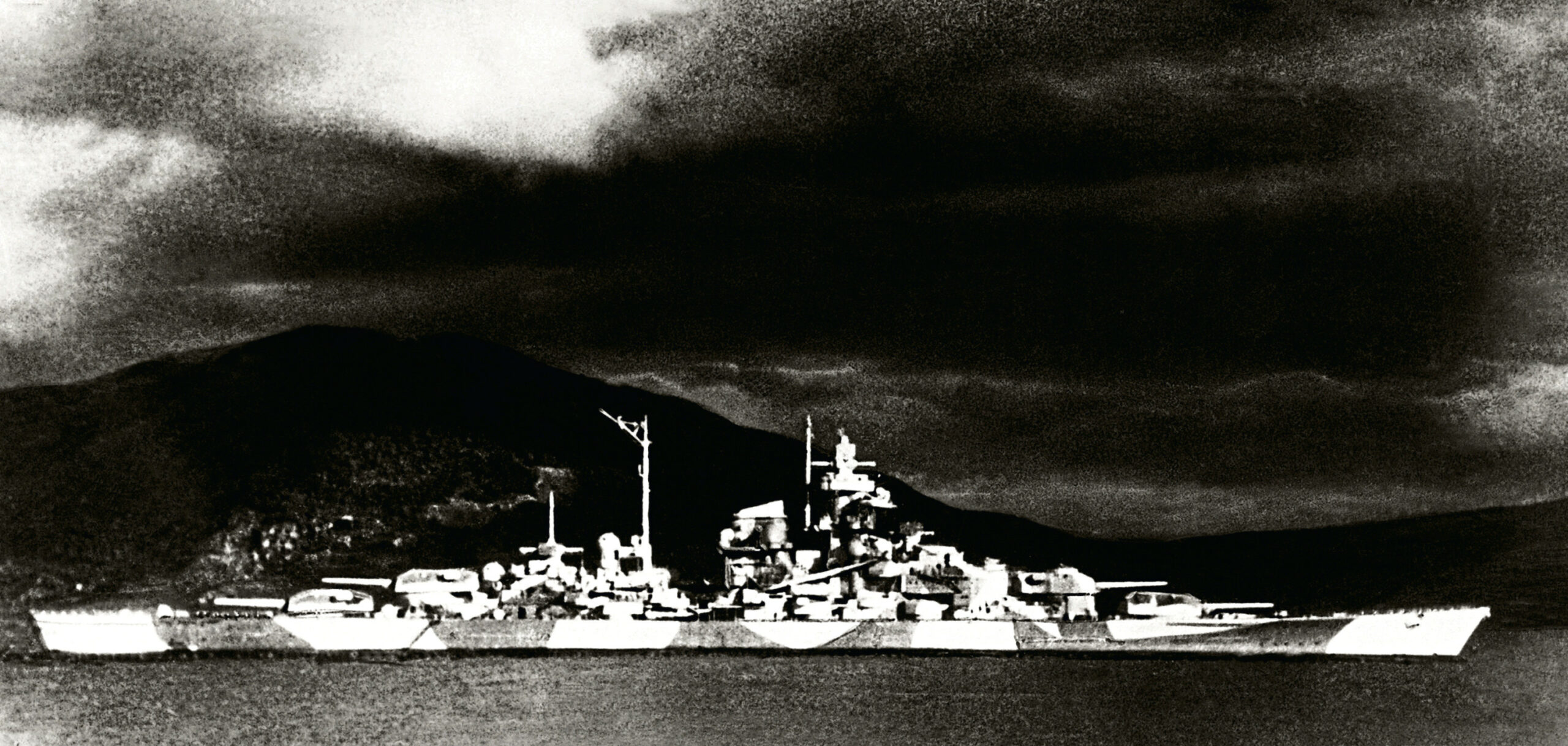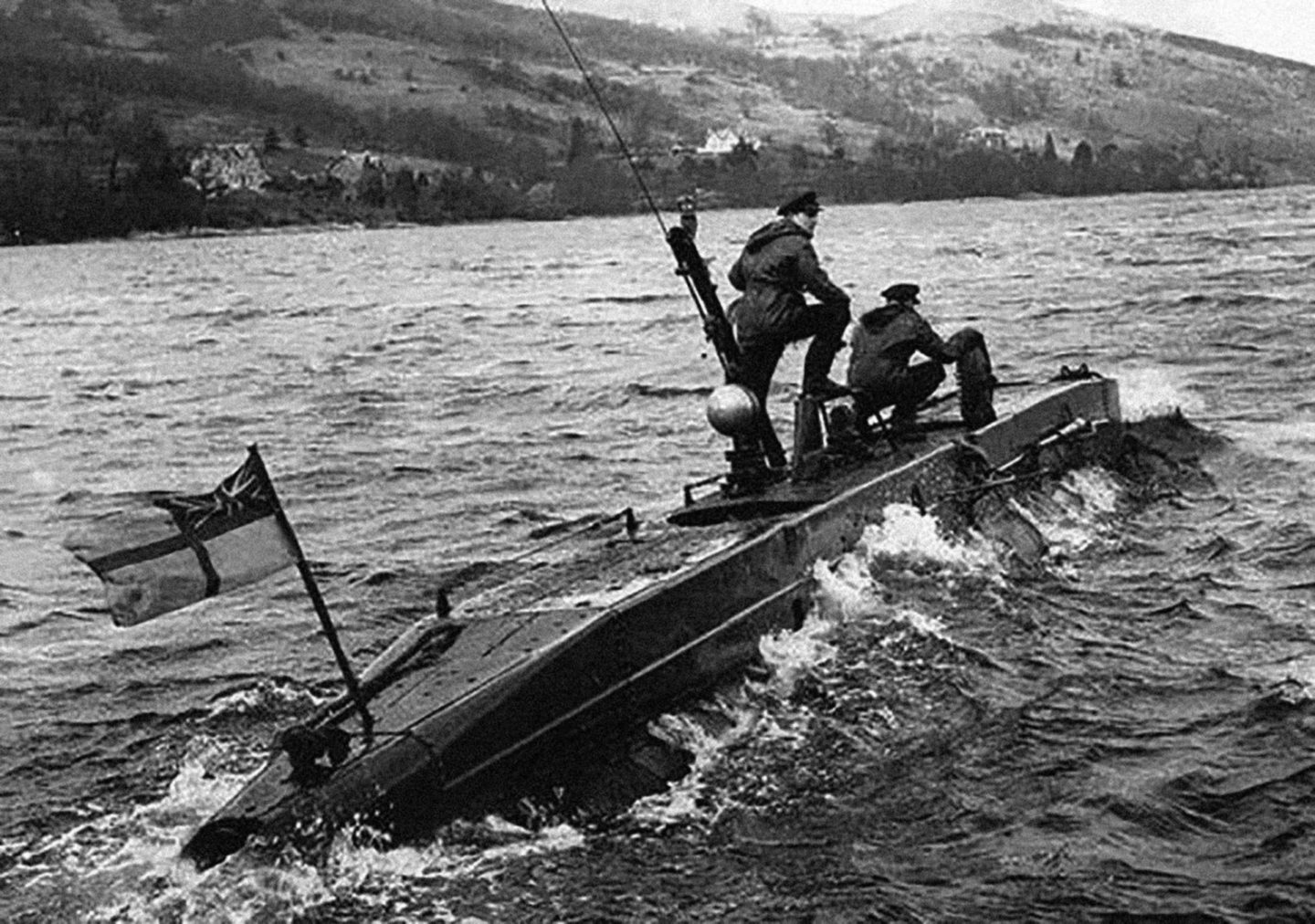
From his study window on the eastern shore of the Firth of Clyde, John Riddell can see the yachts in Fairlie Bay, the defunct Hunterston coal terminal, and the ferry running up the coast to the islands of Cumbrae. For generations, very little of the vista has changed.
But as the retired chartered civil engineer gazes across the water, he can’t help but picture the Fairlie of more than eight decades ago where very little happened – until “The Establishment” arrived.
In 1940, just after the Second World War broke out, the Royal Navy’s vitally important Anti-Submarine Experimental Establishment covertly relocated from Portland in Dorset to the North Ayrshire village – then a quiet backwater – to escape German bombing. It stayed there for the next six years on the site of the former William Fife boatyard.
Its purpose? To carry out highly confidential, world-leading research into the acoustic detection of submarines using a device called asdic – now known as sonar – and to test submarine-killing weapons, like the Fairlie Mortar.
Run by the Royal Navy, hundreds of scientists and naval officers, along with some local men and women, worked at the base. Its experiments into new ways of sinking German U-boats was, said Britain’s wartime leader Winston Churchill, critical to winning the Battle of the Atlantic and ultimately the war. The research is still relevant to anti-submarine warfare today but until relatively recently, Fairlie’s war story was kept under wraps.
Riddell, 76, who moved to the village 50 years ago, said: “When they were testing weapons they came in close to the Fairlie shore and fired them onto the beach. To look out and imagine all these great explosions in the water, it’s almost unbelievable.”
The father of three and grandfather to eight decided to write a book about the base after he was asked to pen an article for his church magazine about one of the research vessels, HMS Kingfisher, and the loss of six sailors who drowned coming ashore in bad weather. Five years of research followed, resulting in a book that for the first time tells the full story of Fairlie’s war and features previously unpublished material.
Riddell explained: “In the First World War the Germans realised that if you could sink the merchant ships bringing food and raw materials into the country, in time you could starve it into submission.
“We nearly got to that position. In the Second World War, we were receiving supplies from America and the U-boats were given the job of sinking the merchant ships carrying them. In the beginning, they were sinking them faster than they could be built. The attacks usually took place at night when they could not be seen or when the submarines were submerged, so that is when asdic was critical.”
Asdic works by emitting a sound signal at regular intervals from a transducer fitted in the hull of the Royal Navy or convoy vessel carrying it. The sound waves travel through the water – in a cone-shaped beam – until they hit a solid body and bounce back as an echo, which is intercepted, then heard and interpreted by an operator who from its sound can identify the vessel detected.
“At the start of the Second World War many different types of asdic existed because of the work done at Portland,” said Riddell.
“They knew how far away the U-boat was but they couldn’t determine the depth it was at. That wasn’t much use because the standard method of sinking and killing a U-boat was to drop a depth charge from a destroyer or frigate set to explode at a supposed depth.” If they guessed right the U-boat would be sunk but if they got it wrong it got away, he said.
Fairlie’s most important work was to find a solution. Riddell explained: “They developed an asdic which could pick up a submarine in three dimensions: distance, direction, and most critically depth. That was a big advance.”
But the German submarines still had a brief window of escape. As the detection vessel closed in on the U-boat, the “beam” from the asdic would sweep over the submarine and the “bings” emitted would stop. And in that brief moment of silence lasting just a couple of minutes, the U-boat had a chance to escape.
“Fairlie came up with what would today be the ‘software’ that decided at what point in the hunt the attacking warship should fire underwater bombs,” said Riddell.
“The new bombs, at first known as Fairlie Mortars, were fired ahead of the naval vessel – instead of being dropped over the stern or rear of the ship (as happened with the depth charge) so that it reached the water when the submarine was still in the asdic beam.
“As the new weapons were further developed, they finally achieved a success rate of nearly 69% compared to the 5-6% success rate of depth charges.” He said the work at Fairlie “made the search, find and destruction of U-boats very much more successful,” adding: “That is why Churchill said it was one of the most important developments of the Second World War.”
Despite the importance of their work, some of the Establishment staff made time to socialise. Commander John (Jack) Binnie was well-known and liked by locals. A First World War veteran who specialised in anti-submarine warfare and asdic training at Portland, he came out of retirement to make use of his expertise. Living locally with his wife and two daughters, he was a member of St Columba’s Scottish Episcopal Church in nearby Largs.
As part of his work, Binnie made a number of Arctic voyages but died in 1945 weeks before VE Day when the ship he was on – HMS Lapwing, part of the escort of one of the last Russian convoys of the war – was torpedoed by a U-boat just five miles from its destination port of Murmansk.
His memorial service held in Largs was attended by Establishment staff and locals who described it as “heart rending”. Some will have remembered happier times. Just two years earlier, a dinner dance attended by more than 100 people from the base and other guests saw the toast to “The Royal Navy” given by local physician Dr Roberts and responded to by Commander Binnie.
Riddell reveals in the book how one scientist taught martial arts in the local school hall: “The Ukraine-born scientist Moshé Feldenkrais learned Judo during his early years in Palestine and by the time he came to Fairlie he had attained rare and prestigious black-belt status.
“Soon he was encouraging colleagues to take up the sport, giving demonstrations in their homes and in the village school when he persuaded the headmaster to allow him to run classes in the evening. After finishing his day’s research work, Feldenkrais would go to the school, clear away the classroom furniture, carry heavy floor mats up from the school cellar, and then do the reverse after demonstrations and teaching. A condition of the school’s use was that local people could join his classes.”
Riddell said: “The people of Fairlie never mentioned the top-secret work carried out in their town. To this day, they refer to His Majesty’s Anti-Submarine Experimental Establishment as simply ‘The Establishment’ and there was never a mention of Portland. Its staff were always referred to as ‘our friends from the south’.”
Fairlie’s Secret War: How One Village Helped Defeat German U-boats, by John Riddell is published by Birlinn
Quiet loch where Navy plotted attack on enemy warship
Fairlie’s research team played a major part in disabling the powerful German battleship Tirpitz that posed an “extreme threat” to North Atlantic and Russian Convoys.
Lying protected from air attack in a Norwegian fjord, but able to go to sea at any time, Tirpitz required the Navy to keep many of its own scarce battleships ready to react – some in Scapa Flow off Orkney.
Author John Riddell told The Sunday Post: “She could annihilate a convoy with the
size of her guns and they decided she had to be put out of action.”
He writes: “The Royal Navy had developed its own version of a small submersible in the form of a midget submarine known as an X-craft.
“The plan was to use the X-craft to enter the fjord, make their way submerged to the battleship, and then place time-delayed explosive charges below her hull before retreating seaward. To do this, an asdic able to measure distance above the transducer was required, and the task was given to the scientists at Fairlie.
“The resulting Type 151 asdic had a very narrow beam and was mounted on top of the submarine’s casing. This enabled the X-craft’s commander to determine when his boat with its explosive charges was directly under the target and the charges could be released for later detonation.”
The X-craft crew was also trained in Scotland, with the Navy training the mini submariners in the icy lochs of the west coast.
Riddell added: “To assist in passing below or through the anti-submarine nets protecting the battleship, a depth-determining asdic – the modern echo sounder – was designed and installed.
“The X-craft attack on Tirpitz took place in September 1943 and succeeded in causing enough damage to reduce her immediate threat to the convoys.”

Enjoy the convenience of having The Sunday Post delivered as a digital ePaper straight to your smartphone, tablet or computer.
Subscribe for only £5.49 a month and enjoy all the benefits of the printed paper as a digital replica.
Subscribe © AP/Shutterstock
© AP/Shutterstock